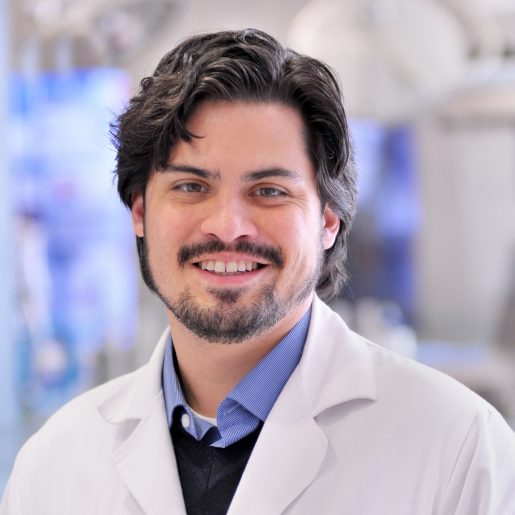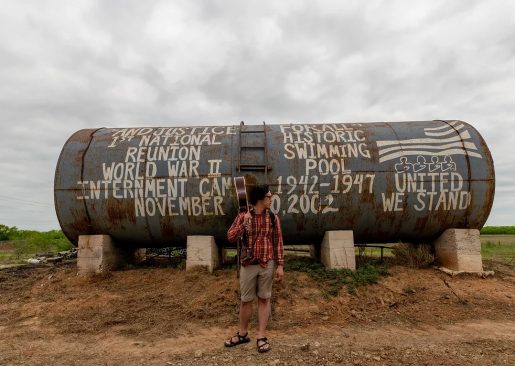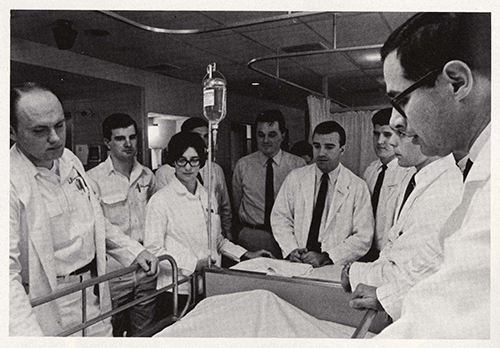Finding nuance, tolerance in narrative medicine
Education in humanities and the arts is gaining traction among healthcare workers and trainees as the pandemic crosses the two-year mark, and worker burnout is at an all-time high.

Dr. Ricardo Nuila, associate professor of medicine at Baylor College of Medicine and director of the narrative medicine program in the Center for Medical Ethics and Health Policy, said medical students often need humanities – poetry, literature, music, art – as an anchor to remind them that their world is more than diagnoses, clinical rotations or medical charts.
Nuila considers narrative medicine and humanities a passion, and one not easily pulled off at a standalone medical school with no access to an English department. But the impact it has on healthcare workers is worth the work, he said.
“What we’ve done is basically tried to see how in the Baylor environment, we can bring events and humanities to students and residents,” Nuila said. “A lot of people at Baylor think humanities should be part of medical education and practice but learning how to implement it in an environment with so much demand on students’ time can be difficult.”
In January, Nuila, along with Drs. Andrew Childress and Larry Laufman, received a $25,000 grant from the American Association of Medical Colleges to study the Fundamental Role of Arts and Humanities in Medical Education (FRAHME). Baylor is one of eight grant recipients; the National Endowment for the Humanities is a partial sponsor.
Humanities study aspects of human society and culture through arts and music, literature, history, philosophy and religious studies. In high school, “The Canterbury Tales” and William Shakespeare are often used as benchmarks for humanities education.
Nuila wants to diversify the events he brings to Baylor and show students and residents what values medical humanities can bring to their daily lives practicing medicine or working as a scientist.
With his grant-winning project “Tinctures of the Arts: Measuring the Effect of Medical Humanities Activities on Empathy, Burnout, and Communication in Students and Other Learners,” Nuila hopes to sponsor a range of interactive activities, including creative writing and narrative medicine workshops, storytelling events and a speaker series.
“We’re at a point where the culture of medicine has swung toward reincorporating ideas into medicine,” he said. “Our group isn’t the only one who thinks humanities have a much more significant role in medicine today.”
In December 2020, the Association of American Medical Colleges released a report, “The Fundamental Role of the Arts and Humanities in Medical Education,” which found that a majority of U.S. medical schools have incorporated arts and humanities to their curriculum, but “the potential impact of the activities is unfulfilled because of significant variation in the content, curricula integration, teaching methods and evaluation methods.”
“How do you teach ideas and skills like tolerance for ambiguity?” Nuila asked. “There’s a predilection toward scientific-training and seeing the world as more black-and-white at the bedside. If the patient doesn’t fit into those categories with their symptoms, how do you reconcile that?”
Nuila said humanities cultivates the idea of tolerance of ambiguity and helps unify two contradictory ideas as potential truths. It teaches empathy and attention, two important concepts in medicine.

At noon March 2, musician and documentary artist Julian Saporiti will bring “No-No Boy,” an immersive multimedia work combining folk music, narrative storytelling and historical images, to Baylor’s Health Equity Grand Rounds.
“No-No Boy” started as Saporiti’s doctoral research project at Brown University and quickly took on a life of its own, he said. The artist met Nuila at a writing workshop where Saporiti was performing.
“(Nuila) saw that I was looking at culture at a microscopic case-by-case basis,” Saporiti said. “He saw some overlap in the cultural relevancy, and how it can be effective in medical schools.”
A native of Nashville, Saporiti often reflects on his Vietnamese roots and the history of Asian Americans in the U.S. in his storytelling. If healthcare workers pay attention to cultural differences, as well as the impact of historical events on certain communities, they can bridge a gap between practitioner and patient, he said.
“Taking large histories and difficult histories of war, refugees and trauma from a personal perspective and not just numbers and dates can help us reckon with current situations we find ourselves in,” Saporiti said.
-By Julie Garcia



